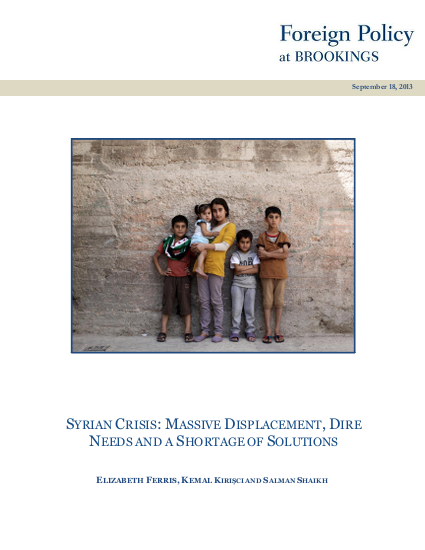
The mounting civilian casualties in Syria and the displacement of over 6 million Syrians – with prospects of both more casualties and more displacement – make this the most daunting humanitarian crisis facing the world today. The international community is struggling to respond to the humanitarian situation inside Syria and throughout the region. Political actors, unable to agree on how to end the civil war, seem to agree that humanitarian assistance is needed, but the funds are neither sufficient now nor likely to be sustainable in the long term. The humanitarian crisis has implications not only for Syrian civilians, but also for the course of the conflict, governments in and beyond the region, the international humanitarian system and, indeed, for global governance. The available data paint a graphic picture of the human misery that has become commonplace in Syria.
This policy brief examines the various dimensions of the Syrian humanitarian crisis. Following a brief description of the evolution of the crisis, analysis turns to the humanitarian situation inside Syria and beyond Syria’s borders, focusing on both the immediate and long-term impact of the crisis on Jordan, Lebanon, and Turkey, with briefer reports on Iraq and Egypt. The brief then turns to conclusions based on this analysis and offers a series of recommendations for key stakeholders. This present summary provides a brief look at the displacement situation before presenting recommendations; further analysis is provided in the policy brief.
The humanitarian effects of this conflict are horrific and we hope that this report will lead to a re-doubling of efforts by the international community and particularly by the United States, to help Syrians find a political solution and bring an end to the war.